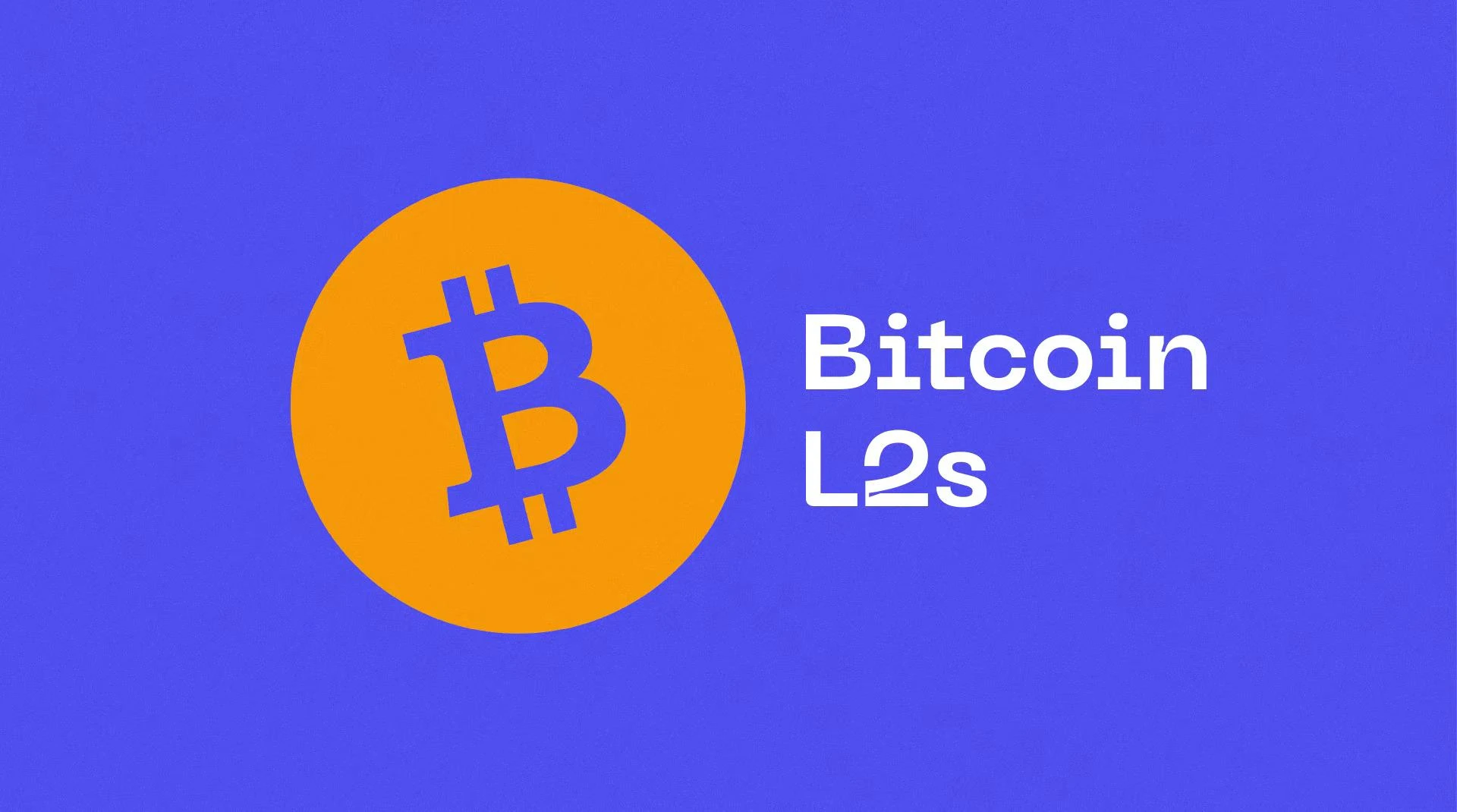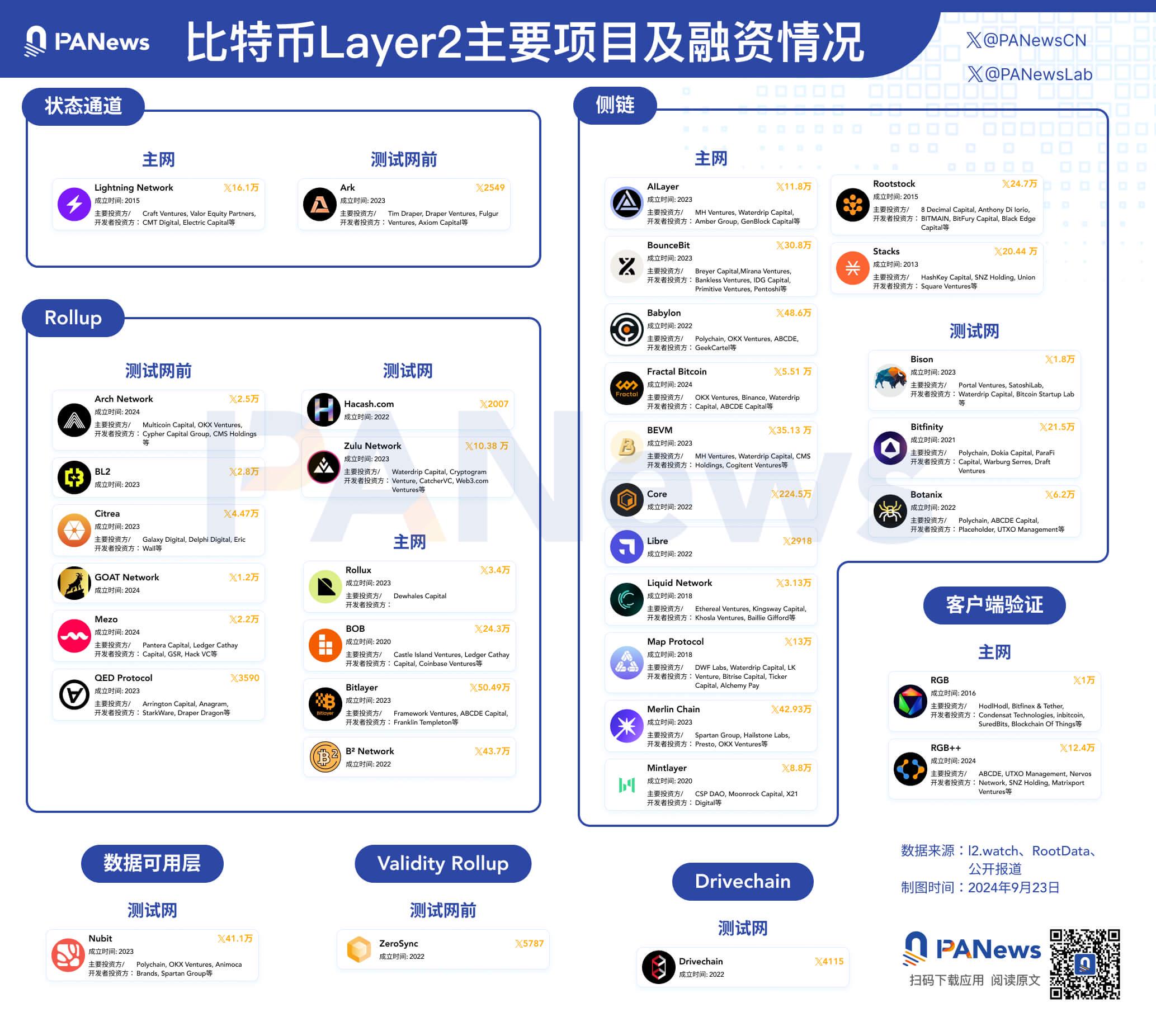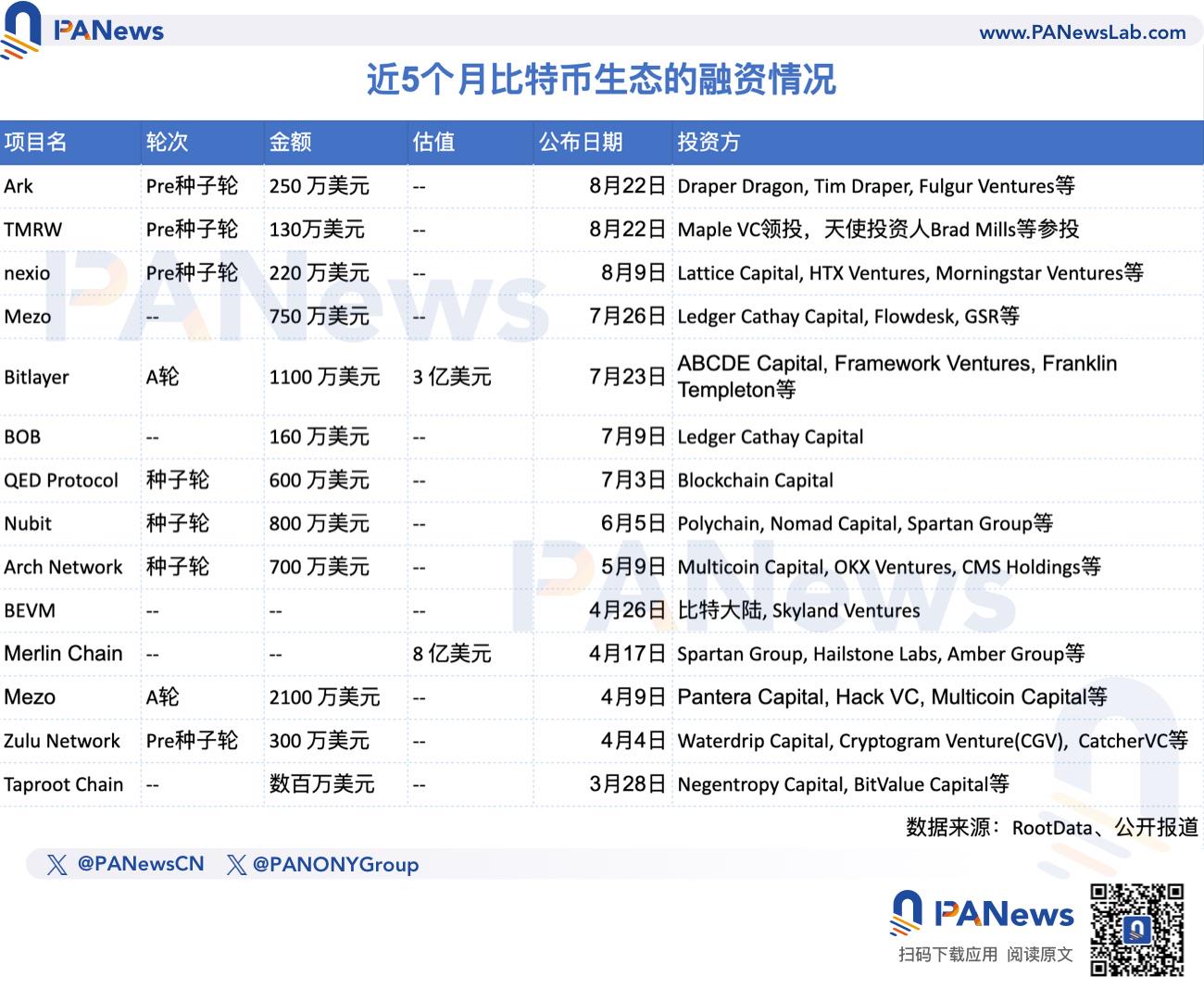Einblick in das Bitcoin L2-Ökosystem: Sidechains und Rollups werden zum Mainstream und Top-Projekte sammeln Millionen von Dollar ein

Originalautor: Weilin, PANews
Bitcoin Layer 2 is a second-layer blockchain network built outside the main chain to improve the scalability, functionality and transaction efficiency of the Bitcoin blockchain. Although it is often compared with Ethereum Layer 2, on the road to Bitcoin expansion, it was not until the BRC 20 experimental token standard based on the Ordinals protocol became popular in May 2023 that more people believed that Bitcoin could not only issue coins, but also realize more complex and sustainable application scenarios.
Currently, according to statistics from l2.watch, there are more than 80 Layer 2 projects focusing on Bitcoin expansion. In this article, PANews will sort out the main Layer 2 projects that follow different technical routes and introduce the latest project dynamics and financing of Bitcoin Layer 2.

The main technical route of Bitcoin Layer 2 at present
State Channels
State channels allow users to establish end-to-end encrypted channels, facilitating multiple off-chain transactions between two or more parties, ensuring that only the first and last transactions are recorded in the Bitcoin blockchain without broadcasting every transaction to the main blockchain. Therefore, state channels can achieve the lowest possible gas fees and support greater transaction throughput.
Representative project: Lightning Network
Sidechain
A sidechain is a separate, independent blockchain that runs in parallel with the main chain, allowing users to transfer assets (bitcoins) from the main blockchain to the sidechain. Once bitcoins are transferred to the sidechain, users can use these assets for smart contracts, token issuance, or to implement new consensus mechanisms. The sidechain verifies the information on the Bitcoin main blockchain and performs subsequent operations. A two-way peg connects the sidechain to the Bitcoin blockchain.
Representative projects: Old projects include Rootstock and Stacks; new projects include BEVM, Merlin Chain, Fractal Bitcoin, Liquid Network, Mint layer, Babylon, Bison, Botanix, Core, BounceBit, AILayer, etc.
Aufrollen
Rollup moves multiple off-chain transactions from the main Bitcoin blockchain to an independent network, processes them, and then submits a compressed transaction back to the chain. Unlike sidechains, Rollup periodically submits blocks to the main chain, thereby inheriting the security and decentralization of the main chain, but the average transaction processing volume is generally not as good as the sidechain. Common types of Rollup include optimistic rollups, ZK-Rollups, and sovereign rollups.
Representative projects: B虏 Network, Bitlayer, BOB, Citrea, QED Protocol, Zulu Network, GOAT Network, Mezo, Bitfinity Network, Arch Network, etc.
UTXO+ Client Verification
UTXO+client verification is a scaling solution for the Bitcoin UTXO (unspent transaction output) account model. It attempts to perform off-chain ledger calculations based on Bitcoin UTXO and ensure the authenticity of the ledger through client verification.
In 2016, Peter Todd proposed the concepts of single-use seal and client-side validation, which led to the birth of the RGB protocol.
The idea of RGB++ is similar to RGB, which calculates, executes and verifies transactions off-chain and then settles on the Bitcoin chain. Nervos takes advantage of the same POW+UTXO structure as Bitcoin and combines it with the innovative isomorphic mapping technology to successfully replace the client verification of the RGB protocol with CKB. In this way, Nervos expands the functionality and flexibility of the RGB protocol while maintaining the same security as Bitcoin.
Representative projects: RGB, RGB++ (UTXO Stack)
Note: In addition to the above technical routes, there is also a classification method that mentions the technical path of Layer 2, BitVM. Its representative projects are Bitlayer and Citrea. This article classifies these two projects as Rollup. Simply put, BitVM is a computing model that allows developers to run complex contracts on Bitcoin without changing its basic rules. Since the concept of BitVM was proposed until the white paper was published in October 2023, it has attracted widespread attention from the Bitcoin community. Under BitVM, calculations will be performed off-chain and verified on-chain, similar to the optimistic rollup mechanism on Ethereum.
Bitcoin Layer 2 Major Project New Progress
Lightning Network
The Lightning Network was first proposed in 2015 and began to be fully implemented in 2018. More transactions can be performed through smart contract applications. The Lightning Network uses revocable sequential maturity contracts (RSMC) and hashed time-locked contracts (HTLC) to solve the confirmation and payment channel problems of off-chain transactions.
The Lightning Network has received widespread attention and adoption, but the Lightning Network is mainly focused on Bitcoin payment scenarios. On July 23 this year, Lightning Network developer Lightning Labs announced the release of an important update to Taproot Assets on the Lightning Network, enabling the Lightning Network to support multi-asset transfers in addition to BTC. Lightning Labs believes that this update is of great significance and can help bring the trillion-dollar stablecoin market into Bitcoin, making the US dollar and world financial assets Bitcoin-based.
Stapel
Stacks (formerly Blockstack) was first proposed in 2013 and conducted an initial coin offering (ICO) in 2017. The Stacks Network uses the Proof of Transfer (PoX) consensus mechanism, which is an adaptation of the Proof of Burn concept and involves miners transferring Bitcoin to secure the Stacks blockchain and receive rewards.
On August 28, after months of delays, Stacks launched its long-awaited Nakamoto upgrade. The upgrade will increase the block production speed of the Stacks network by 120 times, reducing Bitcoins confirmation time from an average of 10 minutes to just seconds. The upgrade also prepares Stacks to launch sBTC, a programmable Bitcoin asset that enables users to bridge their BTC to the Stacks network in a relatively decentralized manner. sBTC is expected to be code-completed in September.
Unterlage
Rootstock (RSK) was first proposed in 2015 and officially launched in 2018. In addition to Rootstock, the team has also developed various products based on RSK, including DEX, wallets, domain name services and other dApps. These dApps are built on universal protocols and cover payment, storage, computing, communication, and gateways/bridging. The goal is to build a comprehensive RIF ecosystem (RSK Infrastructure Framework) and unify it under the RIF OS technology.
The Rootstock team closely monitors progress in the Bitcoin ecosystem, especially BitVM technology, which is the basis of their upcoming BitVMX initiative. In addition, from 2024 to 2025, the team is focused on developing the RBTC super application, consolidating their recent progress in DeFi tools on the Rootstock network.
Merlin-Kette
Launched by Bitmap Tech in February this year, it is a Bitcoin Layer 2 solution that integrates the ZK-Rollup network, decentralized oracle, and on-chain BTC fraud prevention module. Bitmap Techs Metaverse platform, Bitmap.Game, and asset protocol BRC-420 asset protocol have received very good responses in the market this year.
At the end of August, ZK interoperability infrastructure Polyhedra Network announced that it had integrated its decentralized verification network (DVN) with Merlin Chain through LayerZero. After the integration is completed, Merlins more than 100 application ecosystems can benefit from ZK secure interoperability.
On September 9, Merlin Chain released its semi-annual report, reviewing its growth trajectory in the first half of 2024, including: $1.2 billion TVL, $16 billion bridging volume, 1.9 million on-chain addresses, 12.7 million transactions; 50 days after the mainnet was launched, the TVL exceeded $3.9 billion (88% of which were native assets such as BTC and Ordinals), and the market value of M-BTC reached $1.2 billion in the first half of the year; asset trading volume exceeded $3 billion, and DEX liquidity exceeded $78 million. It is reported that Merlin Chain plans to continue to work hard in the three aspects of technology, ecology and community in the second half of the year to promote the sustainable development of the Bitcoin ecosystem.
Fractal Bitcoin
Fractal Bitcoin improves transaction processing capabilities and speed by recursively creating an infinite expansion layer on the BTC main chain using BTC core code, while maintaining full compatibility with the existing Bitcoin ecosystem. Data shows that the block confirmation time of the Fractal network is about 30 seconds, and the transaction processing capacity is said to be 20 times that of the BTC main chain.
The development team behind it, Unisat, has been attracting market attention. The entire team is composed of developers who are proficient in Bitcoin technologies such as SegWit, Lightning Network, and TapRoot. The teams previous projects have also achieved good results in the BRC 20 trading market, and the token $PIZZA issued by the team has also performed well in the market. Investors include Binance and OKX.
On September 9, Fractal Bitcoins mainnet was officially launched, bringing heat to the Bitcoin ecosystem again. As of 5:00 pm on September 12, the number of FB holding addresses in the entire network reached 200,165, an increase of 79,484 in the past 24 hours, and the number of active addresses reached 118,454.
RGB++
Recently, the first over-collateralized stablecoin protocol based on RGB++, Stable++, was launched, using BTC and CKB as collateral while minting a stablecoin pegged to the US dollar, RUSD. By leveraging RGB++s advanced Leap function, Stable++ enables seamless asset transfer within the Bitcoin ecosystem.
In addition, on August 23, the next-generation public lightning network Fiber Network, built on Nervos CKB and off-chain channels, was launched. It can provide fast, low-cost and decentralized multi-currency payments and peer-to-peer transactions for RGB++ assets.
Babylon
On August 22, Bitcoin staking protocol Babylon launched the first phase of the Bitcoin staking mainnet, bringing a third local use case for Bitcoin assets in addition to value storage and simple payments: staking to protect the PoS network and earn rewards. The launch of the first phase of the Babylon staking mainnet caused a surge in Bitcoin network gas that night, but it also triggered more market thinking about the benefits of Bitcoin staking projects.
B虏Network
Founded in 2022, B虏Network is a Bitcoin Layer 2 network developed based on ZK-Rollup. It is compatible with EVM and enables EVM ecosystem developers to seamlessly deploy DApps. On August 28, B虏 Network reached a strategic cooperation with Aptos and Echo Protocol to promote BTCFis expansion to the Move ecosystem. This cooperation is BTCFis first attempt in the Move ecosystem.
Bitlayer
On March 29, Bitlayer announced the launch of a $50 million ecological incentive program to promote the development of its mainnet ecosystem.
On September 2, Bitlayer announced the official launch of its ecological application center, DApp Center. The Bitlaye Application Center aims to create a one-stop platform for users to explore and experience innovative applications in the Bitlayer ecosystem. App Center is an important portal of the Bitlayer ecosystem, bringing together the latest and most popular applications in the ecosystem.
Funding of Bitcoin Layer 2 in the past 5 months

In the past five months, the BTC Layer 2 track has also seen frequent investment and financing, with 14 public financings totaling more than $71.1 million. The highest financing amount was $21 million raised by Mezo in the A round.
On August 22, Bitcoin L2 project Ark Labs raised $2.5 million in the Pre-Seed round; on August 22, Bitcoin Lightning Network payment startup TMRW announced the completion of a $1.3 million Pre-Seed round of financing; on July 26, Bitcoin scaling network Mezo completed a $7.5 million financing, led by Ledger Cathay Fund. In addition, Bitlayer, BOB, and QED Protocol have also shown good money-making capabilities and are favored by capital.
Currently, VCs active in the Bitcoin Layer 2 field include Draper Dragon, ABCDE Capital, Ledger Cathay Capital, Waterdrip Capital, Polychain, etc. Some investment institutions familiar to domestic users, such as Hashkey Capital, OKX Ventures, and Binance Labs, also have a lot of layouts.
In general, there are many Bitcoin Layer 2 projects, and even inflation has appeared. The technical routes adopted by various projects are different. Well-known Bitcoin Layer 2 projects such as Stacks and Rootstock were established relatively early and have been exploring related technologies for a long time, but the projects currently lack more highlights. With the maturity of the Bitcoin basic protocol, projects such as Merlin, RGB++, and Babylon have made the Bitcoin ecosystem more capable of doing more things, which has also brought more possibilities for the development of Layer 2.
Despite this, the development of Bitcoin Layer 2 also faces some bottlenecks. In the view of Haotian, an independent researcher at CryptoInsight, the chaos in the BTC layer 2 market has not really brought significant growth to the BTC ecosystem. When the market is silent, there are disputes from time to time about whether BTC layer 2 is a false proposition. Although no standards give BTC layer 2 more possibilities for borrowing, stitching the mature expansion plan directly to the BTC main network, which is already very limited, may not be able to give back the expansion gains of the second layer to the main network. Instead, it will harm the BTC main network user group due to security and stability issues. In his view, the prosperity of BTC layer 2 in the stage of no standards is about to pass, and BTC layer 2 will move towards a higher technical threshold.
As Haotian said, the narrowing of Layer 2 technical standards may be a trend in future development. At present, challenges and opportunities coexist. In the future, we still look forward to the emergence of more Layer 2 projects that can break through and bring more innovations and surprises to crypto users and the market.
This article is sourced from the internet: Insight into Bitcoin L2 Ecosystem: Sidechains and Rollups Become Mainstream, and Top Projects Raise Millions of Dollars
Related: A step-by-step guide to the five major projects invested by Binance Labs in August
Original | Odaily Planet Daily ( @OdailyChina ) Author | Asher ( @Asher_0210 ) Recently, although the trend of BTC is still unclear, the number of crypto projects that have received financing is increasing. Paying attention to the financing trends in the primary market may provide some insights into the hottest tracks in the future. Among many investment institutions, Binance Labs is the most concerned by the community. Therefore, Odaily Planet Daily has compiled the project profiles and interaction strategies of the five projects invested by Binance Labs as of August today, namely: MyShell, Particle Network, Corn, Sahara AI, and Solayer. MyShell: A decentralized AI ecosystem Project Introduction Image source: Official Twitter MyShell is a decentralized AI ecosystem that allows everyone to build, own and share artificial intelligence applications. It…







